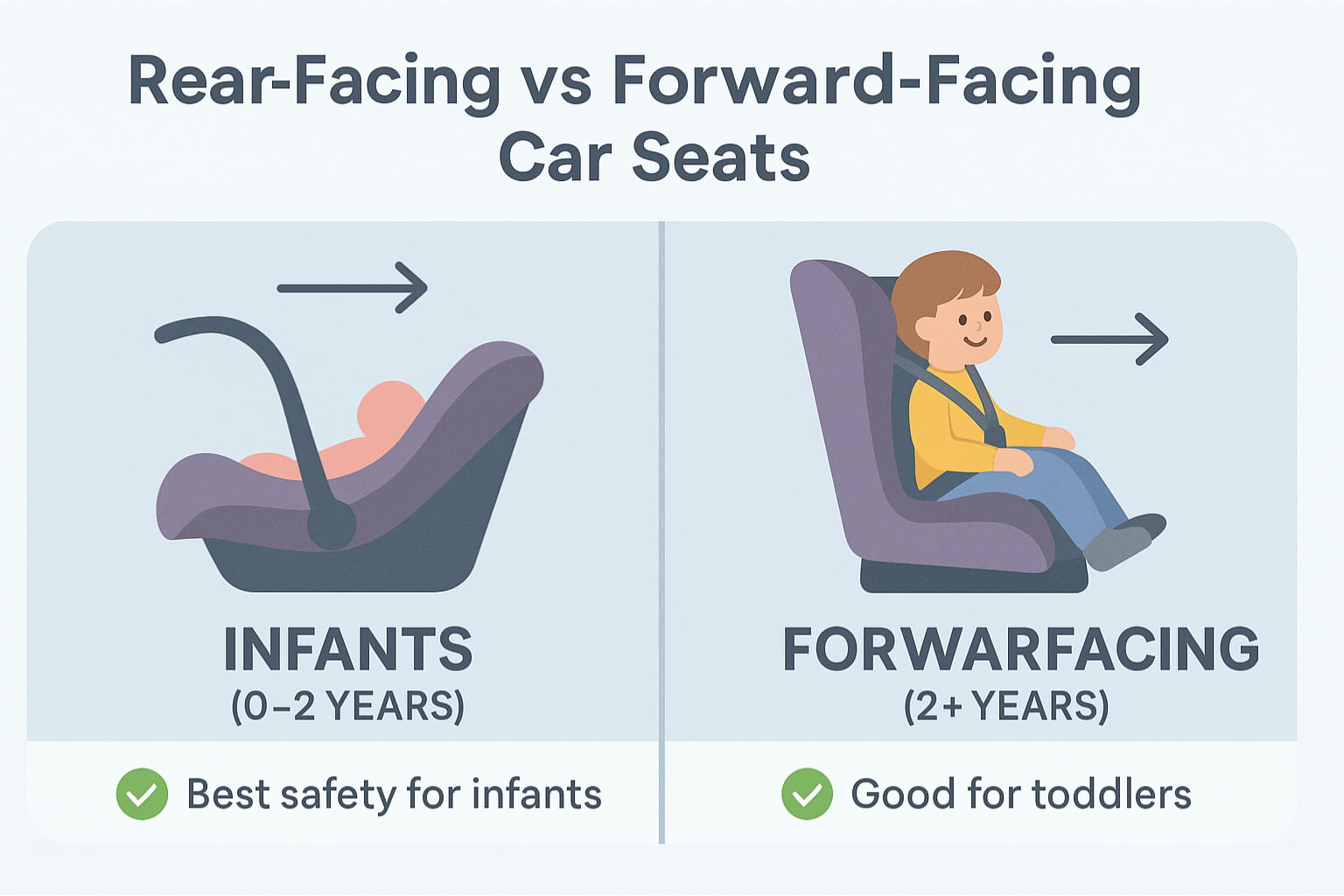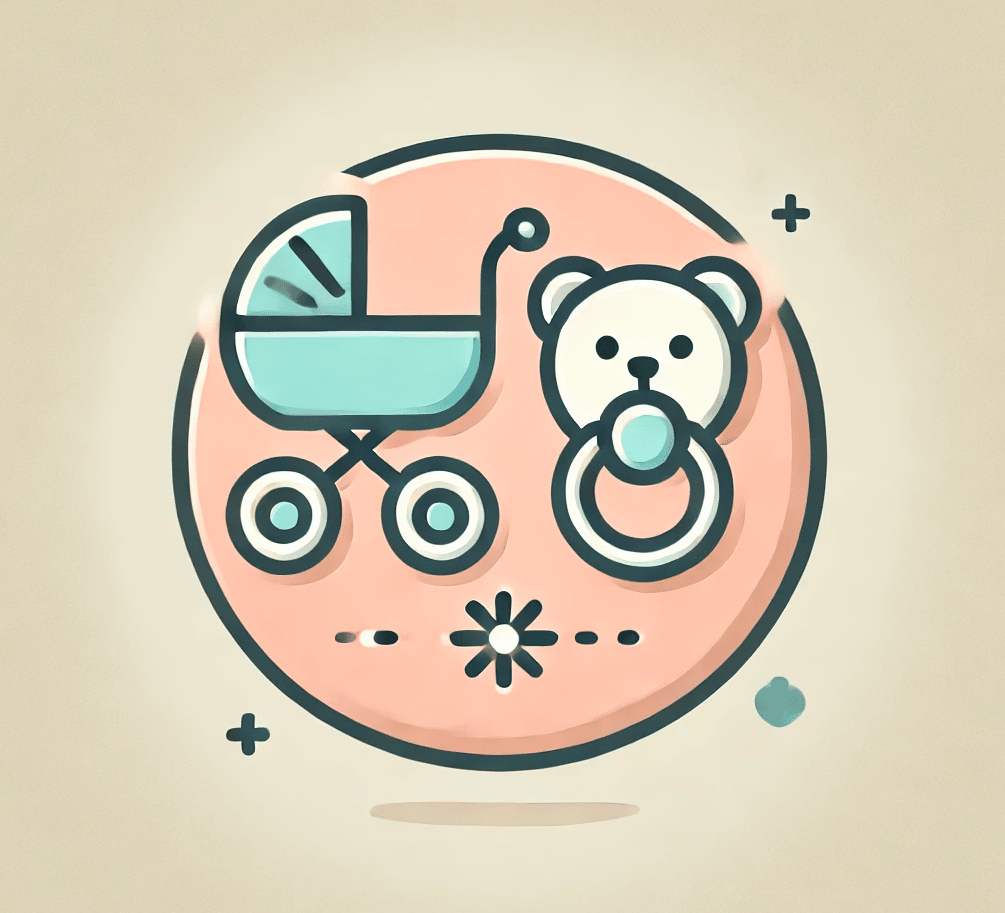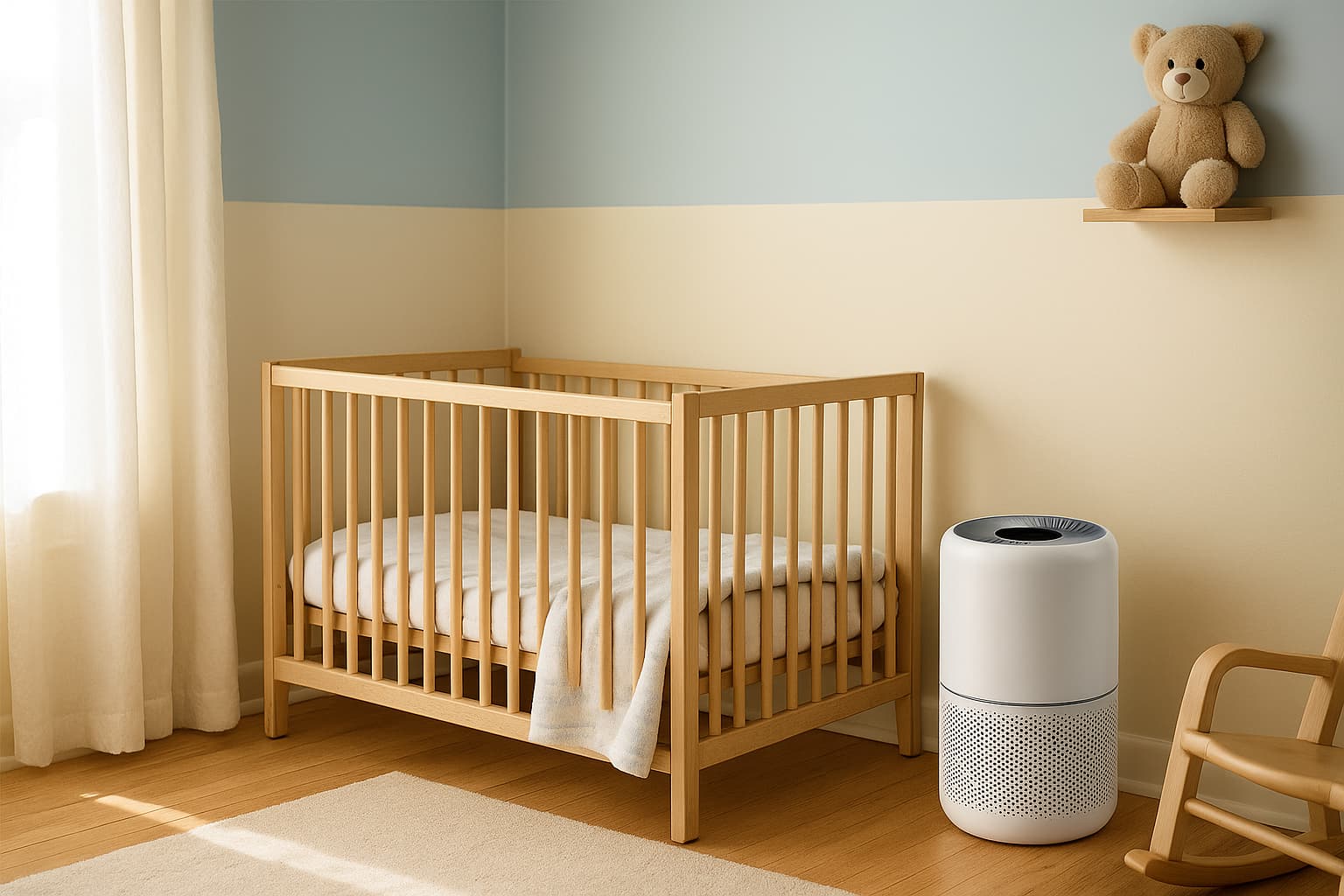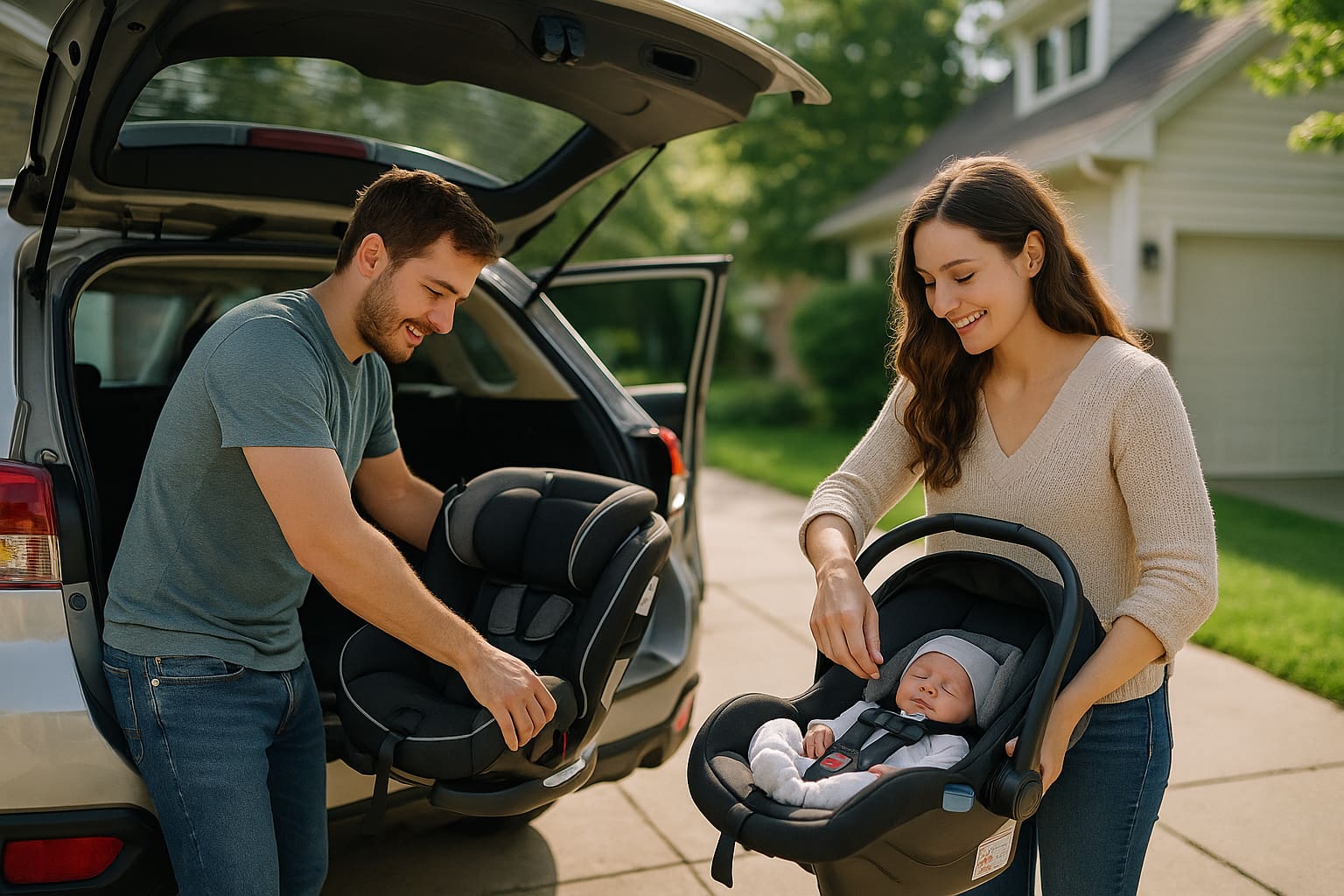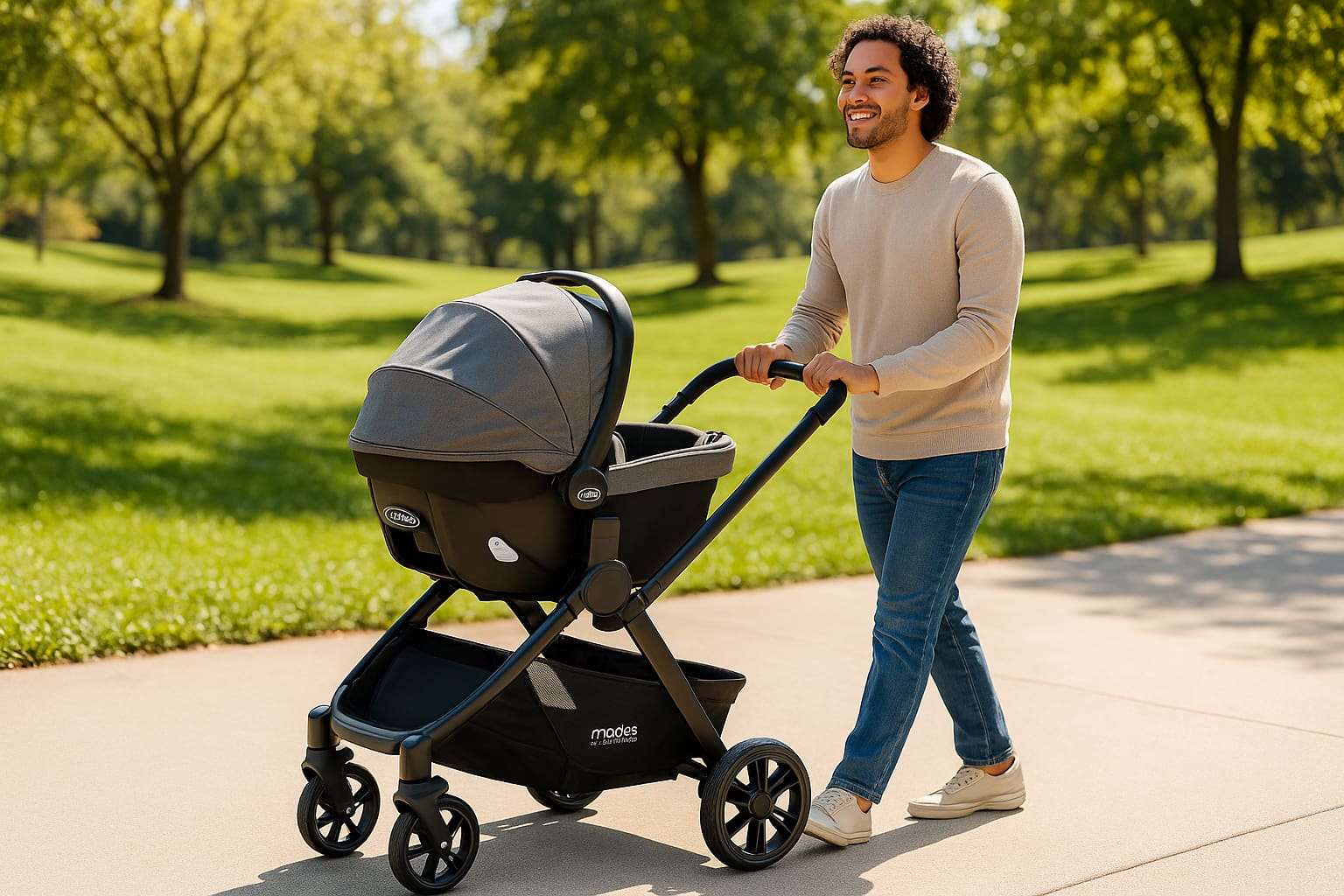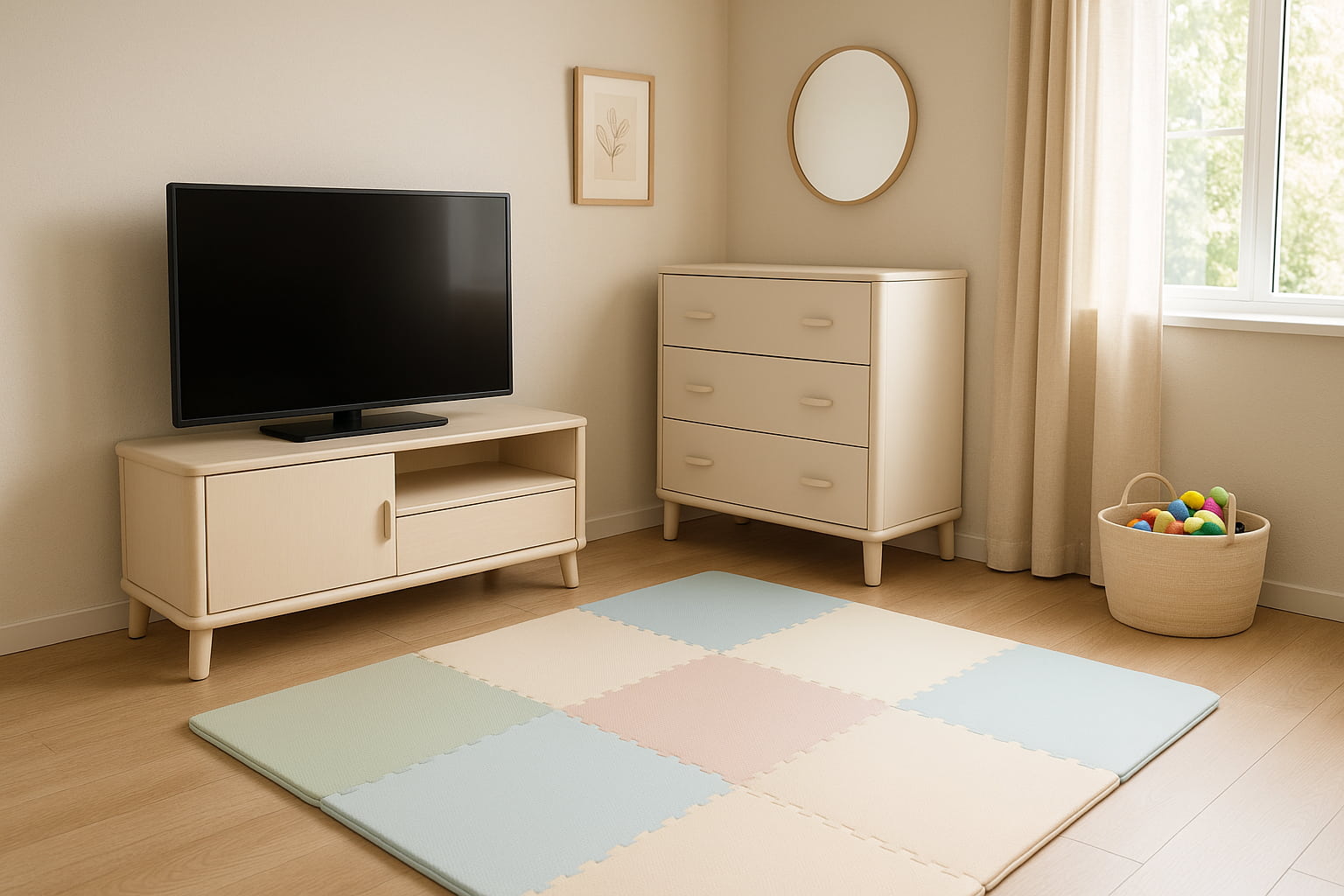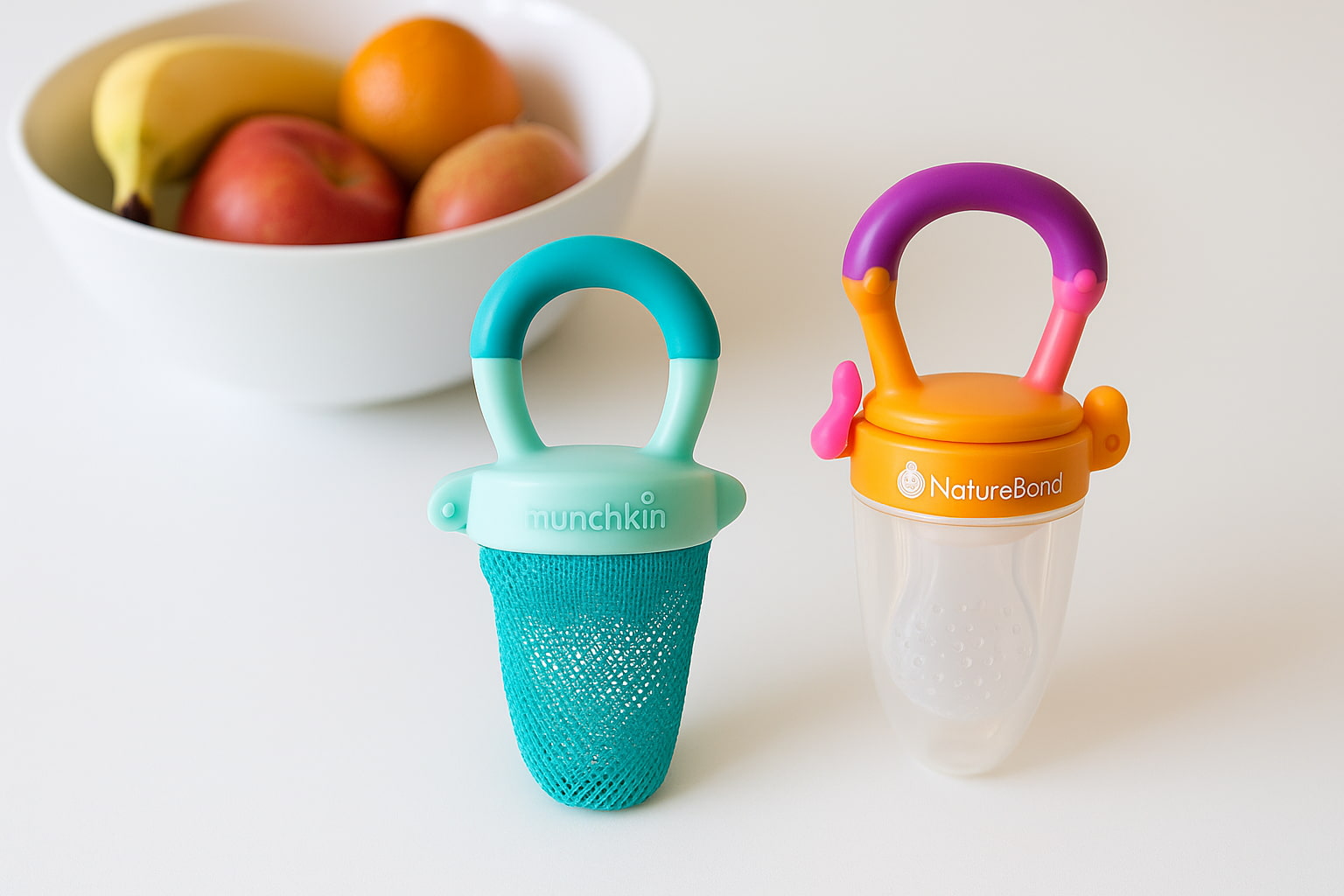Trying to decide between rear-facing vs forward-facing car seats can feel confusing. There are tons of opinions online, and safety guidelines seem to change every few years.
You might be surprised to learn how important this decision really is. Let’s make it simple.
Here’s what this guide covers:
✔️ The real difference between seats that face forward and those that face back
✔️ When it’s actually safe to switch
✔️ What pediatricians and crash tests really say
✔️ Product picks for each type, both budget and premium
Whether you’re a first-time parent or upgrading your current setup, you’ll leave this guide knowing what’s safest for your child and why.
🧸 Why Rear-Facing Car Seats Are Still the Gold Standard
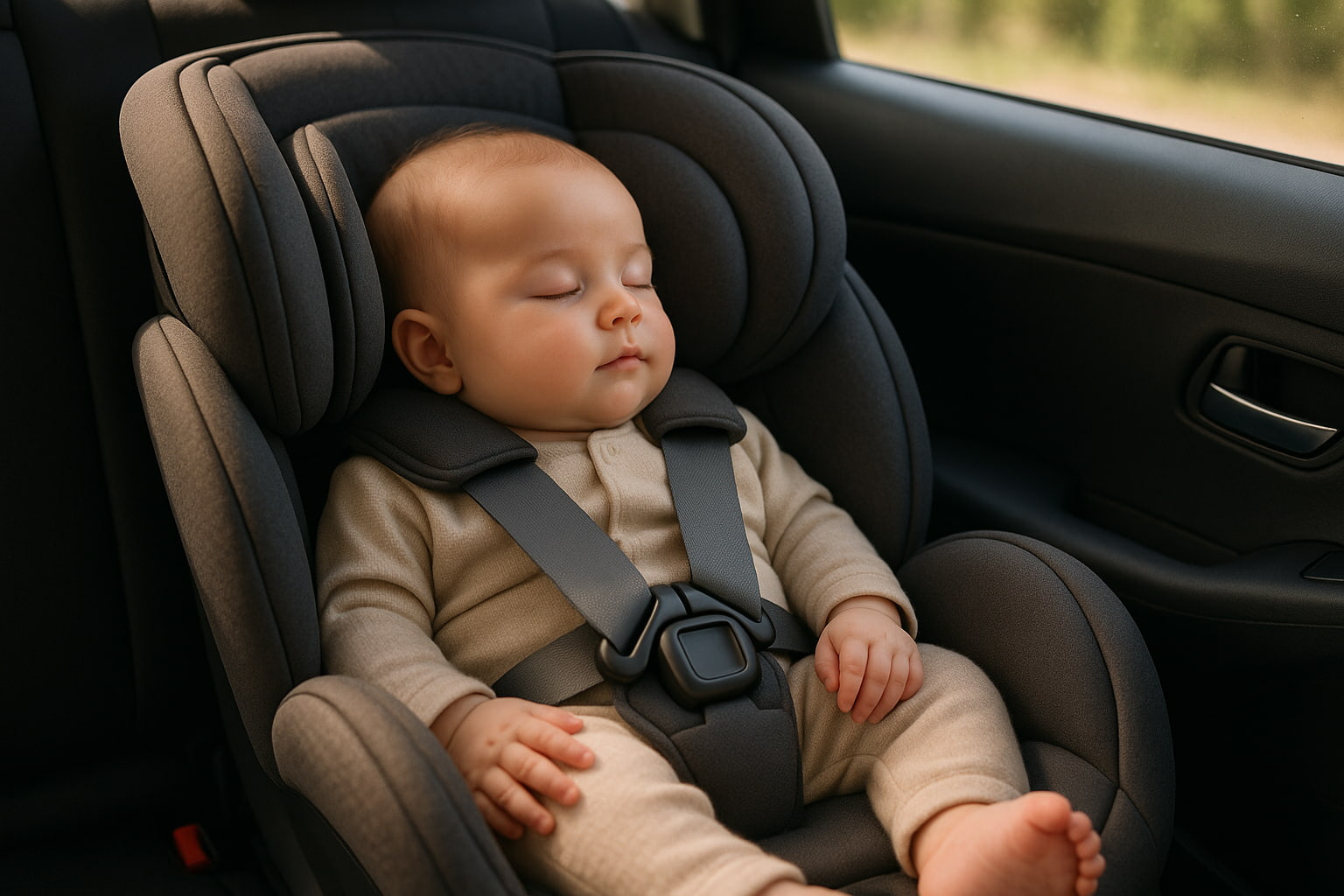
Rear-facing seats are not just for infants. They’re built to support your child’s entire head, neck, and spine during a crash, especially in those critical early years.
Here’s why experts still prefer them:
🛡️ Spread the force of the crash over your whole body, not just your neck.
🧠 Better protection for toddlers with softer bones
🪑 Fit infants and toddlers up to 40 lbs (sometimes more)
📉 71% less likely to get hurt in major crashes
💡 Many parents believe they should switch to forward-facing as soon as their child turns 1, but that’s outdated advice.
➡ 💡 Confused about rear-facing installation techniques? Our Common Mistakes When Installing Car Seats guide shows you what most parents overlook (and how to avoid them).
👀 Things to know about why parents shift to forward-facing
There’s a reason forward-facing car seats exist. Once your child outgrows their rear-facing limits, these seats allow for more legroom and better visibility.
But here’s what you should know before switching too soon:
🚨When you crash, looking forward puts more stress on your neck.
🚙Ideal only after hitting the weight limits for facing backwards (usually 40-50 lbs).
🧒 Easier for older toddlers to get in and out
❗ Often switched too early, before safety guidelines recommend
Some parents switch because their child complains or their legs look cramped. But experts say this isn’t a safety risk; kids are flexible and adjust quickly.
➡ 💡 Not sure if a travel system fits your lifestyle? See our full comparison on Infant Carriers vs Travel Systems: Which is Safer? to learn which option offers more convenience and safety for daily use.
🔄 When Is the Right Time to Transition?
The right time to go forward-facing isn’t based on age; it’s based on size and fit.
Here’s when your child is ready:
✅ The rear-facing weight and height limit has been exceeded (refer to your seat manual)
✅ They have good head and neck control and can sit up straight
✅ There is an integrated forward-facing harness system in your seat
Nowadays, many seats support up to 40-50 lbs. of rear-facing. That means even 3-year-olds may still fit rear-facing, and safely so.
🔄 What Most Parents Confuse About Forward-Facing vs. Rear-Facing
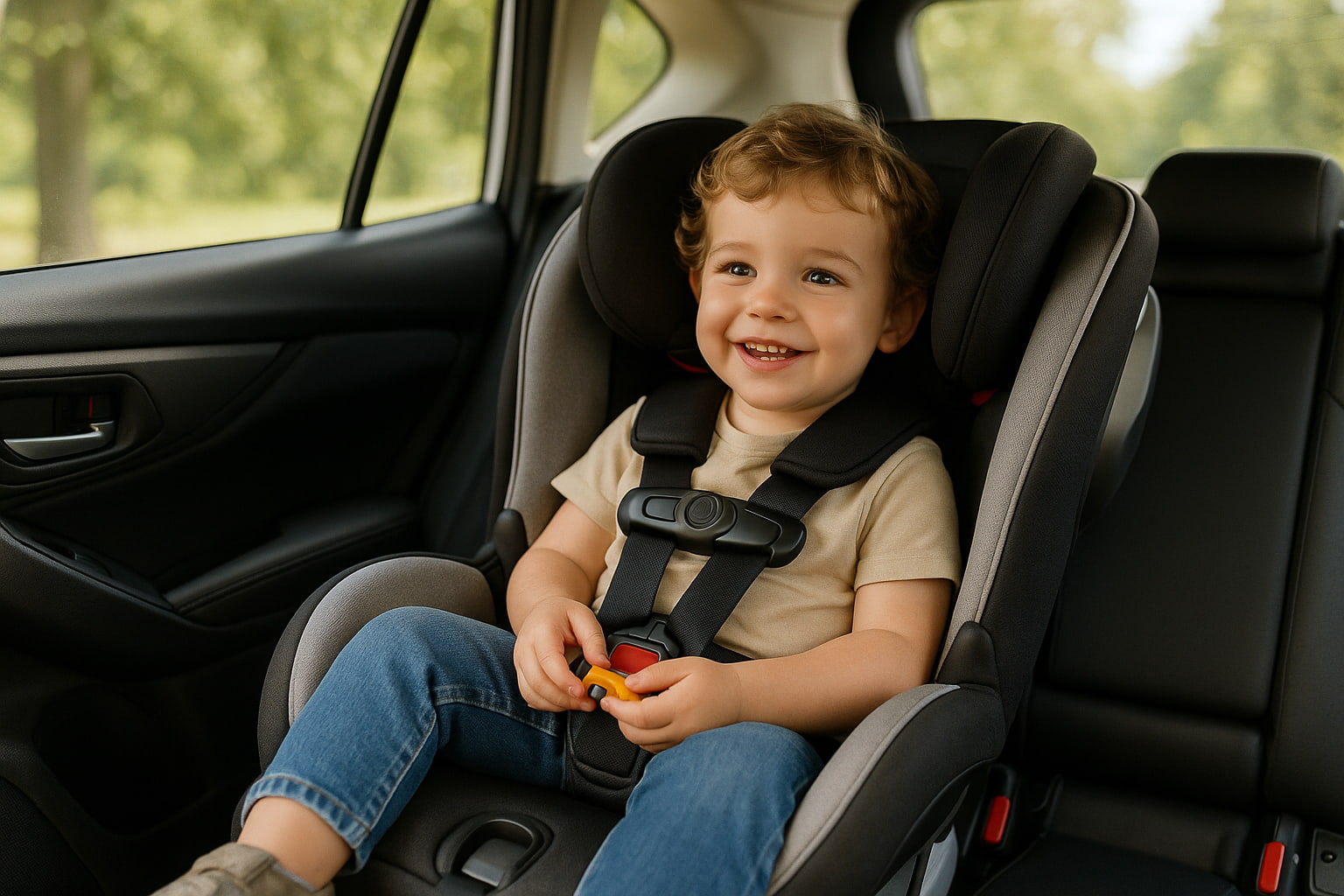
Many parents assume they need to switch to a forward-facing car seat as soon as their child turns one, but that’s outdated advice.
One of the biggest mistakes? Thinking a baby’s legs being “bent” in a rear-facing seat means they’re uncomfortable or unsafe. In reality, rear-facing is safer for the spine, neck, and head in a crash, even for toddlers with longer legs.
Another common myth is that height always means it’s time to flip. But most rear-facing seats have generous height and weight limits. You can (and should) rear-face longer than you might think.
The safest time to switch is when your child has truly outgrown the limits on their rear-facing seat, not based on age or size alone.
💺 Best Rear-Facing Car Seats (Budget & Premium Picks)
1. 🍼 Graco SnugRide Lite LX Infant Car Seat
A lightweight, no-fuss infant car seat that’s perfect for quick installs, small cars, or everyday errands. Safety and simplicity meet in this wallet-friendly pick.
🍼 Why Parents Love It:
🔸 Rear-facing from 4-35 lbs with included infant insert
🔸 Lightweight (just over 7 lbs!) for easy carry
🔸 Click Connect base system for quick installs
🔸 Adjustable canopy with decent sun coverage
💡 Want a simple, budget-friendly seat that doesn’t skip safety?
2. 🍼 Chicco KeyFit 30 Infant Car Seat
One of the most trusted infant seats by hospitals and safety pros. Loved for its tight, easy installs and plush support for newborns.
🍼 Why Parents Love It:
🔸 SuperCinch® one-pull LATCH tightener
🔸 Rear-facing from 4-30 lbs
🔸 Includes removable head and body support
🔸 Compatible with Chicco strollers as a travel system
💡 Prefer comfort and safety with zero hassle?
🪑 Best Forward-Facing Car Seats (Budget & Premium Picks)
3. 🪑 Graco Extend2Fit Convertible Car Seat
Ideal for parents who want extended rear-facing use and flexible features without breaking the bank.
🍼 Why Parents Love It:
🔸 Rear-facing up to 50 lbs, one of the highest limits available
🔸 Forward-facing up to 65 lbs
🔸 4-position leg extension for growing babies
🔸 Fuss-free harness storage and quick LATCH system
💡 Want a long-term car seat that grows with your baby?
4. 🪑 Britax Boulevard ClickTight ARB Convertible Car Seat
A premium convertible car seat with advanced crash protection, comfort, and ease of installation that parents actually rave about.
🍼 Why Parents Love It:
🔸 ClickTight® install is almost foolproof
🔸 Anti-rebound bar reduces impact movement
🔸 Dual-layer side impact protection
🔸 14-position harness and plush padding
💡 Want top-tier safety with no installation guesswork?
💡 Looking for expert-tested seats in your budget? Our Review: Evenflo LiteMax DLX Infant Car Seat is one of the safest and most affordable picks for 2025.
🧠 Do You Know What Car Seat Direction Uses in Crash Tests?
Crash test data tells the real story.
According to the AAP and NHTSA, rear-facing seats:
🛑 Reduce injury risk by 5 times compared to forward-facing
🛑Provide optimal head, neck, and spine protection.
🛑 Are safest until at least age 2, often beyond
Even though forward-facing is legal after age 2 in many areas, staying rear-facing as long as your child fits is the safest option.
🪑 How to Pick a Suitable Seat for Your Child Looking at Their Age and Size
Choosing the right car seat isn’t just about age; it’s about weight, height, and how your child fits in the seat today.
Here’s a quick breakdown to help guide your decision:
🟢 0–12 months: Rear-facing only. Look for infant seats with padded head and neck support.
🟢 12–36 months: Most toddlers still fit safely in rear-facing convertible seats. Prioritize rear-facing until they outgrow the max limits.
🟢 3–5 years: Transition to forward-facing only when rear-facing is no longer an option. Use a 5-point harness for full-body protection.
Bonus Tip: Always check your car seat’s manual, not just the box, to know your seat’s real limits and installation requirements.
Matching the seat to your child’s current size, not just their age, is the safest strategy.
✅ Rear-Facing vs Forward-Facing: What’s Really Safest for Your Child?
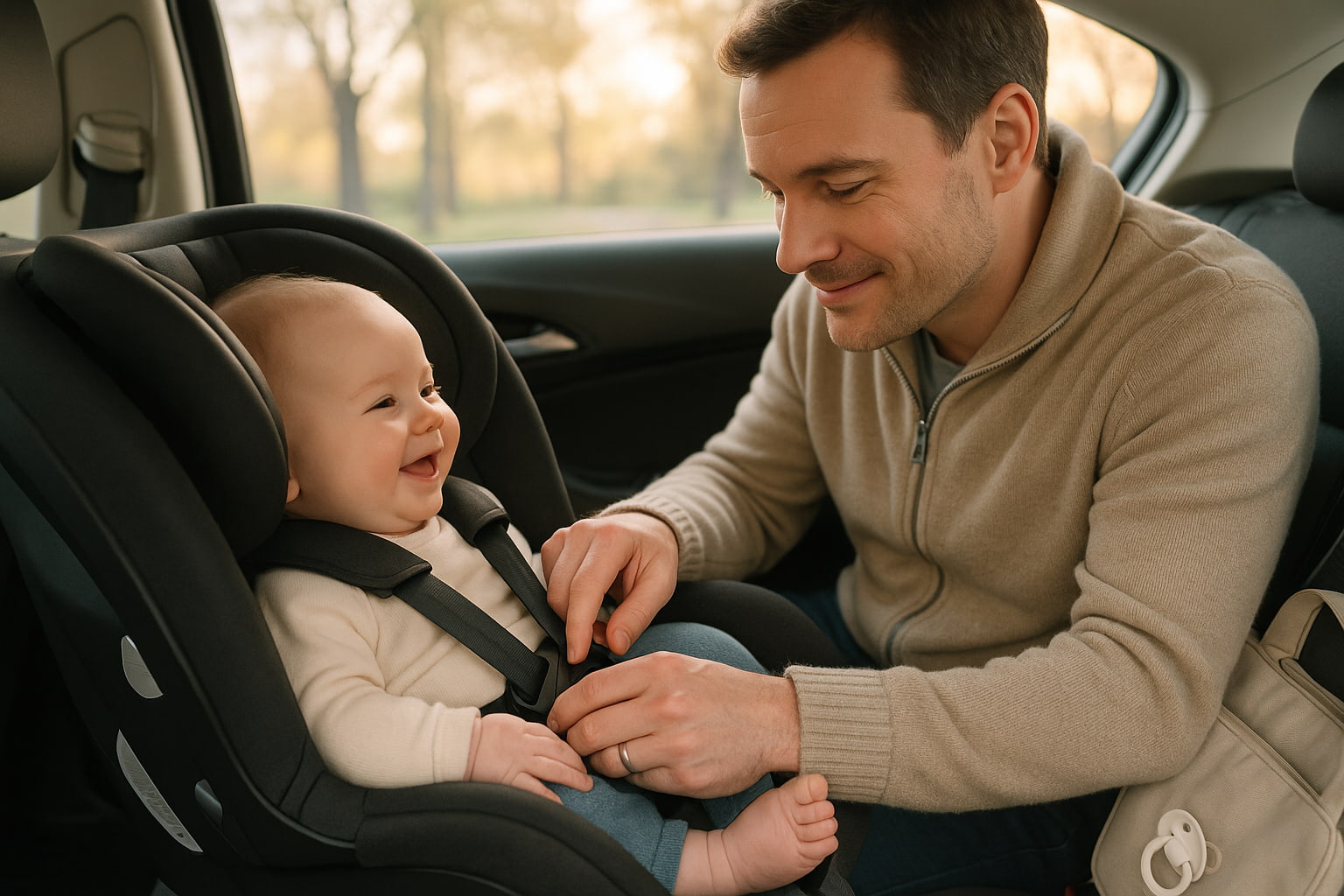
When it comes to rear-facing vs forward-facing car seats, the decision isn’t just technical; it’s deeply personal. You’re balancing safety, comfort, and peace of mind every time you buckle your child in.
The truth? Rear-facing isn’t a baby-only phase. It’s the safest position in nearly every crash scenario, and most kids can stay rear-facing longer than we realize. Forward-facing isn’t “bad,” it’s just better when your child is truly ready for it.
So what’s the move?
✔️ Stick with rear-facing as long as possible within your seat’s limits
✔️ Switch only when height/weight maxes out
✔️ Choose seats that support both directions with clarity and ease
You know your child best. This guide just gave you the clarity to back your decision with confidence, not confusion.
➡ 💡 Still unsure when to switch seat types? Our Car-to-Home Safety Checklist for New Parents walks you through every step, from prepping for the first ride to making safe transitions.
🛍️ Quick Look: Rear- & Forward-Facing Seats in This Comparison
🔸 1. Graco SnugRide Lite LX – Lightweight, budget infant car seat for everyday use
🔸 2. Chicco KeyFit 30 – Trusted infant safety pick with easy installation
🔸 3. Graco Extend2Fit – Rear-facing convertible with extended weight support
🔸 4. Britax Boulevard ClickTight ARB – Premium convertible with top crash protection
🧾 FAQs: Rear-Facing vs Forward-Facing Car Seats
❓ Can my child’s legs get hurt rear-facing?
No. Kids are flexible, and leg discomfort doesn’t mean unsafe.
❓ Should I buy a convertible seat to stay rear-facing longer?
Yes! Many convertible seats allow rear-facing up to 50 lbs.
❓ When can I turn the seat so that it faces forward?
Only after hitting the max height or weight limit for rear-facing, usually not before age 2.
⚠ Affiliate Disclaimer
This post contains affiliate links. At no additional expense to you, we might receive a tiny commission if you buy something from them. Your support helps us keep sharing trusted, parent-tested advice
✍️ By Find For Baby
We’re a team of safety-obsessed parents helping other parents choose smart gear and use it safely, so you can spend less time worrying and more time bonding.
